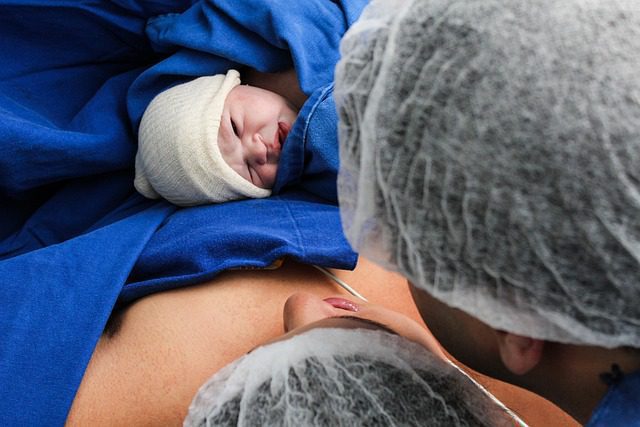Robotic surgery, also known as robot-assisted surgery, represents a groundbreaking innovation in the medical field. It merges advanced robotic technology with surgical procedures, offering a multitude of advantages such as precision, minimally invasive techniques, and enhanced patient outcomes.
In this comprehensive examination, we will explore the progress and applications of robotic surgery in the operating room, shedding light on its transformative influence on modern healthcare.
Evolution of Robotic Surgery
The idea of incorporating robotics into surgery has a relatively short history compared to traditional surgical methods. Robotic surgery’s origins can be traced back to the mid-20th century when the initial endeavors to automate surgical procedures were made.
However, the field made significant strides with the advent of the da Vinci Surgical System in the late 1990s. The da Vinci system, developed by Intuitive Surgical, marked a significant leap in robotic surgical technology.
Subsequently, the da Vinci Surgical System and other robotic platforms have become integral to numerous surgical specialties, including urology, gynecology, cardiothoracic surgery, and more. These robotic systems are tailored to assist surgeons in conducting procedures with heightened precision and control.
They consist of robotic arms equipped with specialized surgical instruments and a high-definition 3D camera, all manipulated by the surgeon from a console.


Advancements in Robotic Surgery
Robotic surgery has experienced notable advancements that have contributed to its extensive adoption and success. Some key developments that have propelled robotic surgery to the forefront of modern medicine include:
- Enhanced Precision: Robotic surgical systems offer an unparalleled level of precision, often surpassing what can be achieved through traditional surgery. The robotic arms can execute highly controlled movements with a broader range of motion compared to the human hand, enabling surgeons to carry out intricate procedures with superior accuracy.
- Minimally Invasive Techniques: Robotic surgery has become synonymous with minimally invasive procedures. The utilization of smaller incisions reduces damage to surrounding tissues, resulting in decreased pain and hastened recovery for patients. Additionally, the robotic instruments utilized in these procedures replicate the movements of a surgeon’s hand, minimizing the risk of harm to healthy tissues.
- 3D Visualization: The utilization of high-definition 3D camera systems in robotic surgery provides surgeons with a three-dimensional view of the surgical site. This depth perception significantly enhances a surgeon’s ability to navigate complex anatomical structures with precision.
- Improved Ergonomics: Surgeons operate robotic systems from a console, which offers ergonomic benefits. This allows them to sit comfortably during procedures, mitigating the physical strain associated with extended periods of standing during traditional surgery.
- Telesurgery: Some robotic systems have the potential for telesurgery, enabling surgeons to conduct procedures remotely. This technology holds promise for scenarios in which access to specialized surgical expertise is limited, such as in rural or underserved areas.
- Surgical Data and Analytics: Robotic surgery platforms often gather an abundance of data during procedures. This data can be analyzed to enhance surgical techniques and patient outcomes. It also holds the potential to support the training and education of surgeons.
- Integration with Imaging: Many robotic systems can be integrated with advanced imaging techniques like MRI and CT scans, allowing surgeons to navigate with real-time imaging guidance. This is particularly valuable in complex procedures and those involving delicate structures.
Applications of Robotic Surgery
Robotic surgery has found applications across a wide spectrum of surgical specialties, revolutionizing the approach to various procedures. Some noteworthy fields where robotic surgery has made a substantial impact include:
- Urology: Robotic surgery is commonly employed in urological procedures, including prostatectomies. The precise movements of robotic instruments are instrumental in preserving urinary and sexual function.
- Gynecology: Gynecological procedures such as hysterectomies and endometriosis treatments benefit from the minimally invasive nature of robotic surgery. Patients experience reduced pain and quicker returns to their daily activities.
- General Surgery: Robotic surgery is utilized in a range of general surgical procedures, including gallbladder removal and hernia repair. The minimally invasive approach reduces the risk of postoperative complications.
- Cardiothoracic Surgery: In the realm of cardiac and thoracic surgery, robotic systems are used for procedures like mitral valve repair and coronary artery bypass. The precision of robotic instruments is pivotal in these delicate surgeries.
- Head and Neck Surgery: Robotic surgery finds application in head and neck procedures, such as tonsillectomies and cancer resections. The enhanced visualization and dexterity of robotic arms aid in preserving critical structures.
- Orthopedic Surgery: Although less common, robotic systems are increasingly being utilized in orthopedic procedures, including knee and hip replacements. They assist surgeons in achieving optimal alignment and implant placement.
- Neurosurgery: Robotic technology is still evolving in neurosurgery, with the potential for precise and minimally invasive approaches to treat conditions like brain tumors and epilepsy.
- Pediatric Surgery: Robotic surgery has also found applications in pediatric surgery, where the smaller size of patients can make delicate procedures especially challenging. The benefits of precision and minimally invasive techniques extend to pediatric patients.


Challenges and Considerations
Despite the significant advancements and expanded possibilities brought about by robotic surgery, it is accompanied by challenges and considerations:
- Cost: The acquisition and maintenance of robotic surgical systems are expensive. The initial investment, ongoing maintenance, and instrument costs can be substantial, acting as a significant barrier for smaller healthcare facilities and potentially impacting the affordability of procedures for patients.
- Training and Learning Curve: Surgeons must undergo specialized training to operate robotic systems effectively. The learning curve for mastering robotic surgery can be steep, and not all surgeons may have access to proper training, raising questions about the equitable distribution of expertise in this field.
- Lack of Tactile Feedback: One limitation of robotic surgery is the absence of tactile feedback. Surgeons rely on visual and auditory cues but cannot feel the tissues they are operating on. This lack of haptic feedback can be a disadvantage in certain procedures.
- Technological Limitations: Despite the advancements, robotic systems are not yet capable of performing all surgical procedures. In complex surgeries, surgeons may require traditional open surgery or laparoscopic techniques.
- Infection Risk: The complex design of robotic instruments can make sterilization challenging, potentially posing an infection risk if not properly maintained and cleaned.
- Resource Allocation: The adoption of robotic surgery must be carefully considered to ensure alignment with the healthcare facility’s goals and patient needs. Decisions regarding the allocation of resources and technology should be made strategically.
- Regulatory Oversight: Regulatory bodies must keep pace with advancements in robotic surgery to ensure the safety and efficacy of procedures. Ongoing oversight is essential to protect patient interests.


Future Directions and Innovations
The future of robotic surgery holds great promise, with ongoing innovations and developments that have the potential to further enhance its applications and address current limitations:
- Artificial Intelligence Integration: Robotic surgical systems may become increasingly integrated with artificial intelligence (AI). AI can offer real-time decision support to surgeons, identify anomalies, and enhance surgical outcomes.
- Miniaturization: Advances in miniaturization could lead to smaller and more agile robotic instruments. This miniaturization trend could expand the application of robotic surgery to fields where space is limited, such as minimally invasive neurosurgery.
- Haptic Feedback: Researchers are actively working on providing surgeons with tactile feedback during robotic procedures. This technological development aims to bridge the gap between open surgery and robotic surgery, allowing surgeons to regain a sense of touch and feel the tissues they are manipulating.
- Remote Surgery: Telesurgery, or remote surgery, might become more prevalent in the future. With this advancement, surgeons could potentially perform procedures from a distance, extending their expertise to underserved regions or aiding in emergency situations.
- Enhanced Imaging: Continued advancements in imaging technologies, such as real-time MRI and augmented reality, hold the potential to further improve the precision and safety of robotic surgery. These technologies will provide surgeons with enhanced real-time visual guidance during procedures.
- Patient-Specific Planning: Personalized surgical plans based on a patient’s unique anatomy and pathology are expected to become more common. Technologies like 3D printing and preoperative simulations will assist surgeons in optimizing their surgical approaches and tailoring procedures to the specific needs of each patient.
In conclusion, robotic surgery has undeniably revolutionized the landscape of healthcare by offering a wide array of advantages, including precision, minimally invasive techniques, and improved patient outcomes.
With a history rooted in the mid-20th century and ongoing technological advancements, robotic surgery has become an integral part of numerous surgical specialties. However, it is vital to address the challenges associated with robotic surgery, such as cost, training, and technological limitations.
Collaborative efforts among regulatory bodies, healthcare facilities, and surgeons are crucial to ensure the responsible and effective use of this transformative technology. As technology continues to evolve, with innovations in artificial intelligence, haptic feedback, enhanced imaging, and patient-specific planning, the future of robotic surgery holds great promise.
It is poised to continue enhancing patient care, expanding its applications, and empowering surgeons to deliver the best possible outcomes for their patients. Robotic surgery has already transformed the way we approach surgery and healthcare delivery, and it will undoubtedly continue to do so in the years to come.































[…] Healthcare: AI can analyze medical data, detect diseases, and assist in treatment planning. Radiology and pathology benefit from AI in image analysis for early disease detection. Chatbots and virtual nurses provide patient support and monitor health conditions. […]
I just could not depart your web site prior to suggesting that I really loved the usual info an individual supply in your visitors Is gonna be back regularly to check up on new posts
Great line up. We will be linking to this great article on our site. Keep up the good writing.
Very interesting points you have mentioned, appreciate it for putting up. “You can tell the ideas of a nation by it’s advertisements.” by Douglas South Wind.
You will find more in our upcoming series. Stay with us.
Its a very high thought I think. keep going